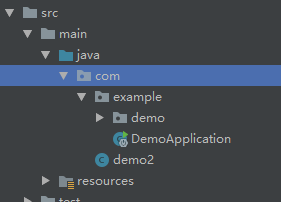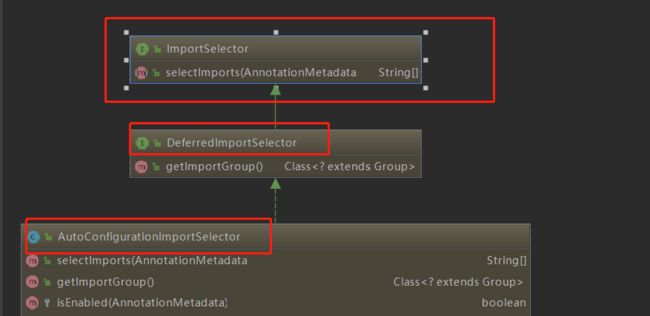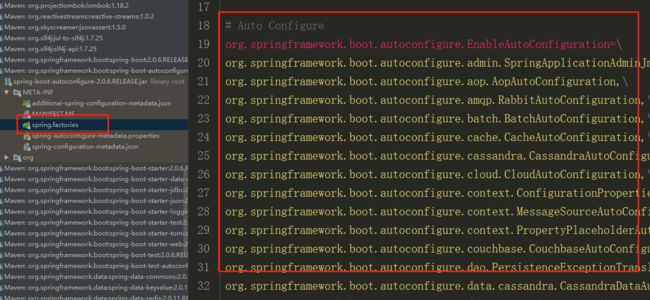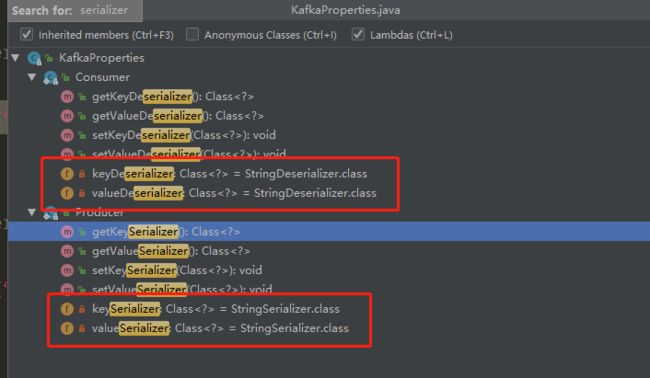SpringBoot自动配置注解原理解析
SpringBoot自动配置注解原理解析
1. SpringBoot启动主程序类:
@SpringBootApplication
public class DemoApplication {
public static void main(String[] args) {
SpringApplication.run(DemoApplication.class, args);
}
}每次我们直接直接启动这个启动类,SpringBoot就启动成功了,并且帮我们配置了好多自动配置类。
其中最重要是 @SpringBootApplication 这个注解,我们点进去看一下。
2. SpringBootApplication注解:
@Target(ElementType.TYPE)
@Retention(RetentionPolicy.RUNTIME)
@Documented
@Inherited
@SpringBootConfiguration
@EnableAutoConfiguration
@ComponentScan(excludeFilters = {
@Filter(type = FilterType.CUSTOM, classes = TypeExcludeFilter.class),
@Filter(type = FilterType.CUSTOM, classes = AutoConfigurationExcludeFilter.class) })
public @interface SpringBootApplication {
三个比较重要的注解:
-
@SpringBootConfiguration : Spring Boot的配置类,标注在某个类上,表示这是一个Spring Boot的配置类
-
@EnableAutoConfiguration: 开启自动配置类,SpringBoot的精华所在。
-
@ComponentScan包扫描
以前我们需要配置的东西,Spring Boot帮我们自动配置;@EnableAutoConfiguration告诉SpringBoot开启自动配置功能;这样自动配置才能生效;
3. EnableAutoConfiguration注解:
@Target(ElementType.TYPE)
@Retention(RetentionPolicy.RUNTIME)
@Documented
@Inherited
@AutoConfigurationPackage
@Import(AutoConfigurationImportSelector.class)
public @interface EnableAutoConfiguration {
两个比较重要的注解:
-
@AutoConfigurationPackage:自动配置包
-
@Import: 导入自动配置的组件
4. AutoConfigurationPackage注解:
static class Registrar implements ImportBeanDefinitionRegistrar, DeterminableImports {
@Override
public void registerBeanDefinitions(AnnotationMetadata metadata,
BeanDefinitionRegistry registry) {
register(registry, new PackageImport(metadata).getPackageName());
}它其实是注册了一个Bean的定义。
new PackageImport(metadata).getPackageName(),它其实返回了当前主程序类的 同级以及子级 的包组件。
以上图为例,DemoApplication是和demo包同级,但是demo2这个类是DemoApplication的父级,和example包同级
也就是说,DemoApplication启动加载的Bean中,并不会加载demo2,这也就是为什么,我们要把DemoApplication放在项目的最高级中。
5. Import(AutoConfigurationImportSelector.class)注解:
可以从图中看出 AutoConfigurationImportSelector 继承了 DeferredImportSelector 继承了 ImportSelector
ImportSelector有一个方法为:selectImports。
@Override
public String[] selectImports(AnnotationMetadata annotationMetadata) {
if (!isEnabled(annotationMetadata)) {
return NO_IMPORTS;
}
AutoConfigurationMetadata autoConfigurationMetadata = AutoConfigurationMetadataLoader
.loadMetadata(this.beanClassLoader);
AnnotationAttributes attributes = getAttributes(annotationMetadata);
List configurations = getCandidateConfigurations(annotationMetadata,
attributes);
configurations = removeDuplicates(configurations);
Set exclusions = getExclusions(annotationMetadata, attributes);
checkExcludedClasses(configurations, exclusions);
configurations.removeAll(exclusions);
configurations = filter(configurations, autoConfigurationMetadata);
fireAutoConfigurationImportEvents(configurations, exclusions);
return StringUtils.toStringArray(configurations);
}
可以看到第九行,它其实是去加载 public static final String FACTORIES_RESOURCE_LOCATION = "META-INF/spring.factories";外部文件。这个外部文件,有很多自动配置的类。如下:
6. 如何自定义自己的Bean:
我们以RedisTemplate为例:
@Configuration
@ConditionalOnClass(RedisOperations.class)
@EnableConfigurationProperties(RedisProperties.class)
@Import({ LettuceConnectionConfiguration.class, JedisConnectionConfiguration.class })
public class RedisAutoConfiguration {
@Bean
@ConditionalOnMissingBean(name = "redisTemplate")
public RedisTemplate redisTemplate(
RedisConnectionFactory redisConnectionFactory) throws UnknownHostException {
RedisTemplate template = new RedisTemplate<>();
template.setConnectionFactory(redisConnectionFactory);
return template;
}
@Bean
@ConditionalOnMissingBean
public StringRedisTemplate stringRedisTemplate(
RedisConnectionFactory redisConnectionFactory) throws UnknownHostException {
StringRedisTemplate template = new StringRedisTemplate();
template.setConnectionFactory(redisConnectionFactory);
return template;
}
} 我们每次在Spring中使用Redis,都会使用到RedisTemplate这个工具类,但是他默认给我们返回的这个工具类,可能不是很符合我们的要求。比如:我们想要开启事务,或者想要改变它默认的序列化。
这时候该如何去做呢?
根据前面的分析,只要我们在容器中放入一个RedisTemplate Bean即可。
@Bean("redisTemplate")
public RedisTemplate myRedisTemplate(
RedisConnectionFactory redisConnectionFactory) {
RedisTemplate template = new RedisTemplate<>();
template.setConnectionFactory(redisConnectionFactory);
// 修改序列化为Jackson
template.setDefaultSerializer(new GenericJackson2JsonRedisSerializer());
// 开启事务
template.setEnableTransactionSupport(true);
return template;
} 我们自己定义我们的RedisTemplate模板,修改序列化,开启事务等操作。
我们将我们自己的Bean加入到IoC容器中以后,他就会默认的覆盖掉原来的RedisTemplate,达到定制的效果。
我们在以Kafka为例:
假设我们想要消费的对象不是字符串,而是一个对象呢?比如Person对象,或者其他Object类呢?
1:我们首先去查找KafkaAutoConfiguration(xxxAutoConfiguration),看看是否有关于Serializer属性的配置
2:假设没有我们就去KafkaProperties文件查找是否有Serializer的配置
然后直接在application.properties修改默认序列化就好,连Bean都不需要自己重写。
类似这种,可以使用Spring提供的Json序列化,也可以自动使用第三方框架提供的序列化,比如Avro, Protobuff等
spring.kafka.producer.key-serializer=org.springframework.kafka.support.serializer.JsonSerializer spring.kafka.producer.value-serializer=org.springframework.kafka.support.serializer.JsonSerializer spring.kafka.consumer.key-deserializer=com.example.common.MyJson spring.kafka.consumer.value-deserializer=com.example.common.MyJson
后记:
- 很多时候我们刚开始看一个知识点,不懂迷茫的时候,真的不要慌,可能说明你暂时的知识储备还不够理解。
- 等你经过不断的学习,不断的深入以后
- 突然有一天,你会突然的醒悟
- 哇!原来他讲的是这个意思
- 可能我们不理解,我们可以去尝试去看两遍,三遍,甚至更多遍,突然会有一个时刻,你会醒悟过来的
- 且行且珍惜,共勉
原文地址: https://www.cnblogs.com/wenbochang/p/9851314.html



